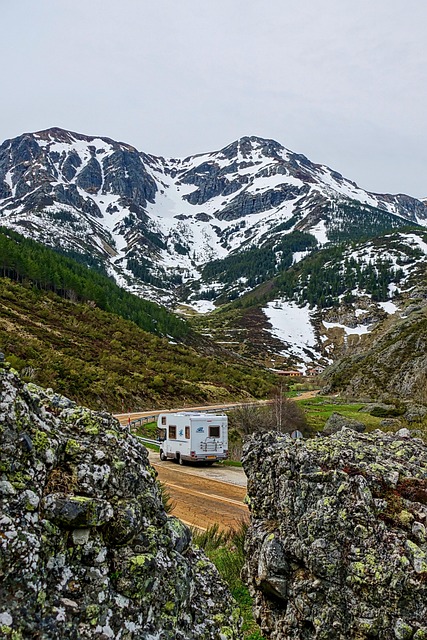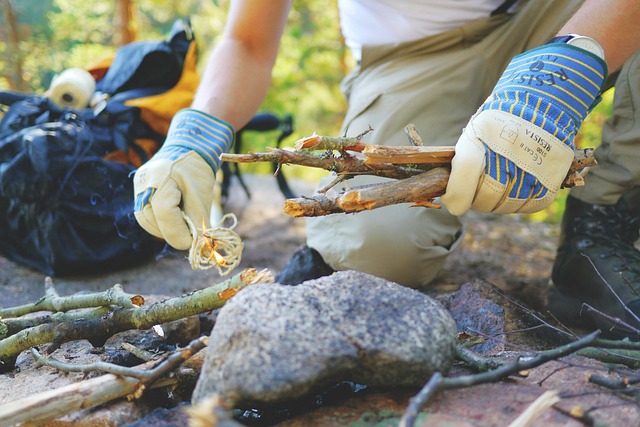The Leave No Trace (LNT) principles are crucial guidelines for outdoor enthusiasts engaging in primitive camping, aiming to minimize human impact on ecosystems. By understanding and adhering to LNT, campers protect remote areas, conserve wilderness, and ensure future generations can enjoy untouched natural settings. Key practices include planning ahead, minimizing group size, respecting wildlife habitats, proper waste disposal, and leaving campsites as found. Embracing minimalism and discrete outdoor habits fosters a sustainable connection with nature.
“Uncover the secrets of responsible outdoor exploration with our guide on Leave No Trace principles, specifically tailored for primitive campers. In an era where wildlife and wilderness face unprecedented pressures, understanding these guidelines is crucial for preserving natural spaces.
We’ll delve into seven core principles, offering practical insights on how to apply them during your camping adventures in remote areas. From leaving no trace of your presence to respecting wildlife, this primer ensures a sustainable and ethical approach to primitive camping.”
- Understanding Leave No Trace: A Primer for Primitive Campers
- The 7 Principles of Leave No Trace and Their Application in Camping
- Practicing Responsible Camping: Tips for Implementing Leave No Trace Principles
Understanding Leave No Trace: A Primer for Primitive Campers

Leave No Trace (LNT) principles are a set of guidelines designed for outdoor enthusiasts, especially those engaging in primitive camping or backcountry adventures. It’s a philosophy that encourages responsible and sustainable interactions with nature. The core idea is to minimize human impact on the environment, ensuring that these natural spaces remain pristine and undisturbed for future generations. For primitive campers, who often venture into remote areas, understanding and adhering to LNT principles are not just recommended but essential.
By adopting LNT practices, campers can protect vulnerable ecosystems and wildlife habitats. This includes leaving campsites as they were found, properly disposing of waste, avoiding trails where possible, and respecting natural features. For instance, primitive campers should never build structures or fires that could damage vegetation, and they must pack out all their trash to prevent pollution. These simple yet powerful actions contribute to the conservation of our wilderness areas, ensuring that the beauty and integrity of these places are preserved for all to enjoy.
The 7 Principles of Leave No Trace and Their Application in Camping

The 7 Principles of Leave No Trace are guidelines designed to promote responsible outdoor recreation, ensuring that natural environments remain pristine for future generations. When applied to camping, especially primitive camping, these principles become a set of practical tools for minimalizing the impact on wilderness areas.
Firstly, plan ahead and prepare involves researching and understanding the local regulations and potential impacts before heading into the wild. Campers should choose appropriate sites, minimize their group size, and carry essential supplies to reduce the need for resource extraction. Leave no trace of your presence means going beyond clean-up efforts; it encourages leaving natural settings as they are, avoiding landmarks, and respecting wildlife habitats. Proper waste disposal, discrete urination techniques, and pack-it-in, pack-it-out practices for all trash are integral to this principle.
Practicing Responsible Camping: Tips for Implementing Leave No Trace Principles

Responsible camping goes hand in hand with Leave No Trace principles, especially when venturing into primitive outdoor settings. One of the key practices is minimizing your impact on the environment by leaving campsites as you found them. This means no trace of your presence should remain after your departure. Start by choosing appropriate camp locations; avoid sensitive ecosystems and look for established campsites designed for primitive camping.
When setting up, follow a few simple rules: disperse your campsite to reduce impact on vegetation, always carry out all trash (including food scraps), and use a portable toilet or dig a hole at least 200 feet away from water sources. Properly store and cook food to prevent wildlife attraction, and avoid building structures that could harm the natural landscape. Remember, primitive camping allows you to connect with nature, so embrace minimalism and leave only footprints.
